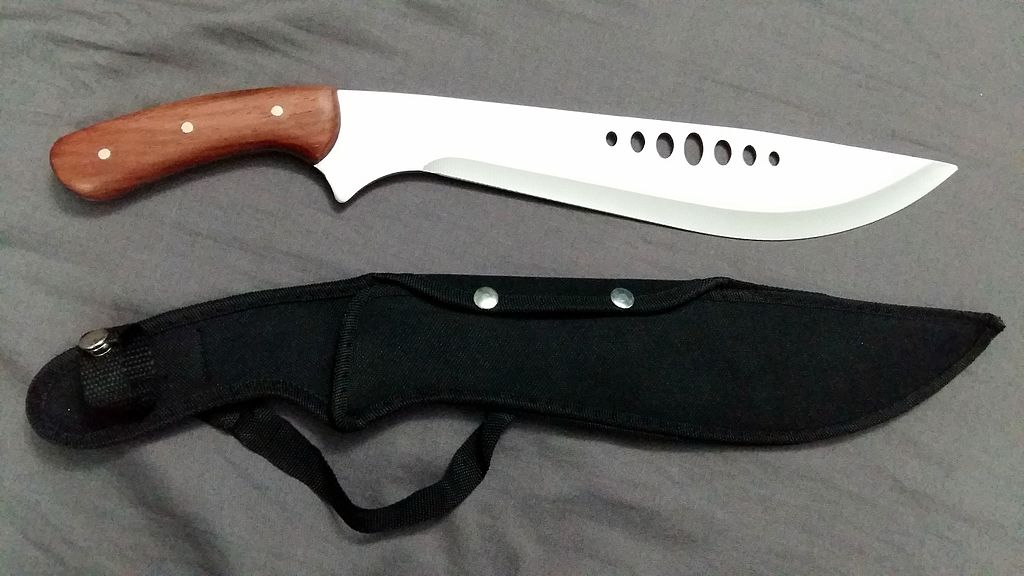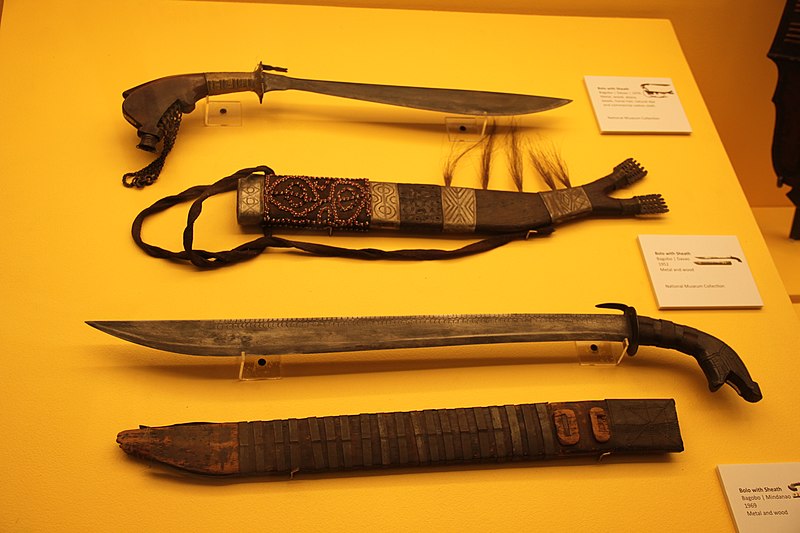Filipino culture is filled with the bolo knife. For generations, Filipino history, culture, and daily life have revolved around this versatile and renowned sword. What makes a bolo knife special?
This detailed guide will explain the bolo knife’s history, attributes, applications, and significance. This page will help you comprehend bolo knives, whether you are a history buff, a knife collector, or just inquisitive.
What Is a Bolo Knife?
Filipinos use Bolo knives. Its big, heavy blade curls near the tip. Single-edged blades range from 12 to 24 inches. Bolo knives can chop, cut, and clear plants. Agriculture, forestry, and outdoor activities employ them. Bolo knives are useful and combative due to their form.
The History of the Bolo Knife

The Philippine bolo knife dates back to before colonialism. These knives were made and used by the natives and early settlers for hunting, farming, and self-defense.
In the 16th century, the bolo knife symbolized opposition against Spanish colonization. Andrés Bonifacio and the Katipunan used the bolo knife to achieve emancipation. It symbolically resisted the occupiers during World War II.
The Anatomy of a Bolo Knife

Several crucial parts make a bolo knife unique:
Blade: Bolo knives are known for their blades. High-carbon steel is durable and sharp. The blade usually has a convex cutting edge and a characteristic curvature.
Spine: The blade’s back, opposite the cutting edge. It supports the blade for precision chopping and slicing.
Handle: Bolo knives have wood, bone, or horn handles. Ergonomic design ensures a solid and pleasant grip.
Guard: Some bolo knives have a handguard or quillon. This guard protects the user’s hand from sliding onto the blade when chopping.
Full Tang: A traditional bolo knife’s blade runs the length of the handle. This structure strengthens the knife.
Uses of a Bolo Knife

Bolo knives are versatile and practical. Bolo knife usage include:
Farming and
Farmers need the bolo knife in rural Philippines. Its sharp, sturdy blade is great for removing weeds, harvesting crops, and preserving agricultural property.
Outdoor Survival
Survivalists and outdoorsmen trust the bolo knife’s toughness and adaptability. The bolo knife is essential for outdoor activities including building shelters, cutting firewood, and cooking.
Self-Defense
Bolo knives have been employed for self-defense due to their size and sharp blades. Its weight and chopping abilities protect against threats.
Customary Ceremonies
Filipino rites sometimes involve the bolo knife. The Filipino bolo knife symbolizes bravery, power, and culture.
Crafts and Art
Bolo knives are prized for their craftsmanship and beauty. The Philippines’ rich cultural past is displayed in the bolo knife’s blade and handle patterns by skilled artisans.
What Makes the Bolo Knife Unique?

The bolo knife’s cultural and historical significance and physical traits make it distinctive. Bolo knife characteristics include:
Traditional Filipino Design: The bolo knife’s curved blade, robust craftsmanship, and local materials exemplify Filipino design.
Versatility: The bolo knife’s wide blade and sharp edge can chop and carve.
Cultural Symbolism: The bolo knife symbolizes Filipino identity and struggle.
Adaptability: The bolo knife has developed to fit diverse uses and conditions.
Questions (FAQs)
Can you carry bolo knives?
Local laws govern bolo knife ownership and carry. Research and understand your local laws.
Bolo knives for survival?
Yes, the bolo knife’s sturdy build and adaptable blade make it survival-ready. Effective use requires survival training and expertise.
Bolo knife maintenance—how?
After using a bolo knife, clean and dry it, apply a small layer of protective oil, and store it in a dry, secure place. Sharpening the blade as needed optimizes performance.
Are antique bolo knives collectible?
Knife and history buffs enjoy collecting vintage bolo knives. Collecting knives requires researching their provenance, authenticity, and condition.
Bolo knives—are they different?
Bolo knives have different features and functions. The “barong,” a shorter, lighter bolo knife, and the “talibong,” with a straighter blade, are examples.
Bolo knives: where to buy?
Bolo knives are sold in knife shops, Filipino cultural stores, and internet marketplaces with a large selection of blades from trusted dealers.
Conclusion
The bolo knife symbolizes Filipino culture, heritage, and workmanship. Generations have relied on its unique design, utility, and versatility. The bolo knife has a rich history, from its use in farming and survival to its position in Filipino folklore and resistance.
Whether you like the bolo knife for its usefulness, collectability, or cultural importance, learning about its history and applications deepens your enjoyment. The bolo knife’s curved blade, sturdy grip, and inventiveness symbolize Filipino ingenuity.
When you see a bolo knife, appreciate its centuries-old history and cultural value. The bolo knife represents Filipino pride, strength, and flexibility.
